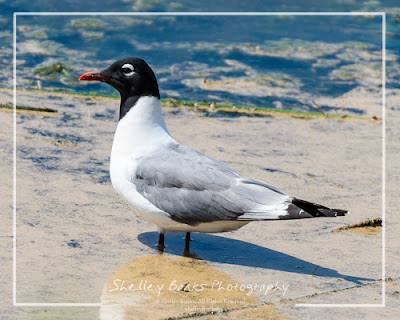 |
| Franklin's Gull, near Chaplin, SK © SB |
With its clown-wide white eye-rings, bright orange bill, black head and white chest, Franklin's Gull is an unforgettably striking bird of contrasts.
And yet, when I saw Franklin's Gulls far out on Wascana Lake last week, I had difficultly at first distinguishing them from another black-headed gull, Bonaparte's Gull.
(Note to self: Carry binoculars. The differences were clear through the telephoto viewfinder, and on the computer at home. Although also small, Franklin's Gull seemed a little larger than Bonaparte's, but more critically for me, the Franklin's Gull's beak is orange, not black; its white eye-rings are more startlingly large; the black feathers creep further down its neck; its wing feathers are a darker gray — and no Franklin's Gulls that I saw had feathers that ruffled in the wind.)
 |
| Franklin's Gull, overcast day, Wascana Lake, Regina, SK © SB |
Named for the Arctic explorer, Franklin's Gull nests on the Prairies, aka the Northern Great Plains, and Audubon.org says it's sometimes called the "Prairie Dove." (Audubon also labels it as "Climate Threatened.") As for their winters, these "highly migratory" birds spend those along the west coast of South America.
What are these? Franklin's Gull — Mouette de Franklin.
Location: Near Chaplin, and at Wascana Lake, Saskatchewan
Photo date: June 29, 2012, and April 26, 2016.
~~~~~

No comments:
Post a Comment